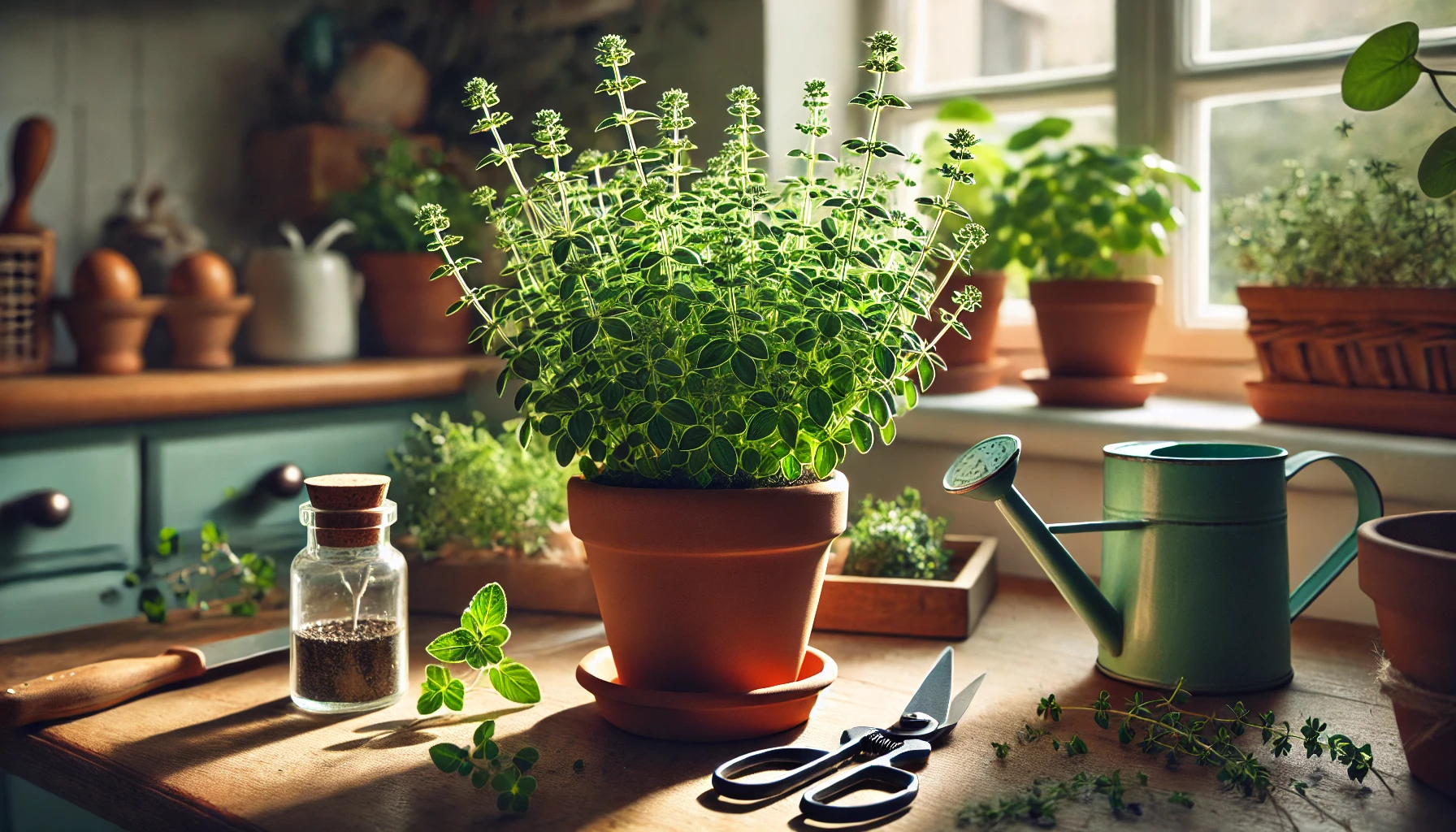Marjoram is a fragrant, easy-to-grow herb often used in Mediterranean cuisine. It has a sweet, mild flavor that enhances soups, sauces, and roasted meats. Growing marjoram indoors allows you to have fresh leaves year-round while adding a touch of greenery to your home. This guide will help you successfully grow and care for marjoram indoors.
1. Why Grow Marjoram Indoors?
- Fresh harvest all year – Enjoy marjoram even in winter.
- Compact growth – Perfect for windowsills and small spaces.
- Low maintenance – Drought-tolerant and easy to grow.
- Aromatic – Fills your home with a sweet, herbal scent.
2. Choosing the Right Type of Marjoram
There are three main types of marjoram, but one is best suited for indoor cultivation:
- Sweet Marjoram (Origanum majorana) – The best variety for culinary use and indoor growing.
- Wild Marjoram (Origanum vulgare, also called oregano) – Stronger flavor, often confused with oregano.
- Pot Marjoram (Origanum onites) – Similar to sweet marjoram but slightly more pungent.
For indoor gardens, Sweet Marjoram is the top choice due to its mild flavor and ease of growth.
3. Selecting the Right Pot and Soil
Choosing the Best Pot
- Use a 6–8 inch container with drainage holes to prevent water buildup.
- Terracotta or ceramic pots work well since they help absorb excess moisture.
Best Soil for Marjoram
- Use a light, well-draining potting mix designed for herbs or succulents.
- Add perlite or sand to improve aeration and drainage.
- Avoid heavy, moisture-retentive soils.
4. Providing the Right Light Conditions
Marjoram requires plenty of light to thrive.
- Place the pot in a south- or west-facing window where it receives 6–8 hours of direct sunlight daily.
- If natural light is insufficient, supplement with a full-spectrum LED grow light for at least 10–12 hours per day.
- Rotate the pot every few days to ensure even light exposure.
5. Watering and Humidity Needs
Marjoram is drought-tolerant and prefers dry conditions over excessive moisture.
- Water when the top inch of soil feels dry.
- Use the “soak and dry” method – water deeply, then allow the soil to dry before watering again.
- Avoid watering the leaves to prevent fungal issues.
- Marjoram prefers low to moderate humidity and does not require misting.
6. Temperature and Air Circulation
Marjoram thrives in warm temperatures and good airflow.
- Keep the temperature between 65–75°F (18–24°C).
- Avoid placing the plant near cold drafts, heaters, or air conditioning vents.
- Ensure good air circulation to prevent mold and mildew.
7. Fertilizing for Healthy Growth
Marjoram does not need frequent fertilization.
- Use a diluted organic fertilizer (such as compost tea or fish emulsion) once every 4–6 weeks.
- Avoid excessive fertilization, as too much nitrogen can reduce the herb’s flavor.
8. Pruning and Harvesting Marjoram
Regular pruning encourages bushy growth and prevents legginess.
How to Prune Marjoram for Best Growth
- Trim stems once the plant reaches 6–8 inches tall.
- Cut just above a leaf node to encourage branching.
- Remove any yellowing or dead leaves.
Harvesting Marjoram for Cooking
- Use scissors to snip fresh leaves as needed.
- For the best flavor, harvest in the morning when the oils are most concentrated.
- Store fresh marjoram in the fridge or dry it for long-term use.
9. Common Problems and How to Fix Them
1. Yellowing Leaves
Cause: Overwatering or poor drainage.
Solution: Let the soil dry between waterings and ensure proper drainage.
2. Leggy Growth
Cause: Not enough light.
Solution: Move to a sunnier location or use a grow light.
3. Slow Growth or Wilting
Cause: Nutrient deficiency or root-bound plant.
Solution: Apply a diluted fertilizer or repot into a larger container.
10. Propagating Marjoram for More Plants
Marjoram can be propagated by cuttings or division.
How to Propagate Marjoram from Cuttings
- Cut a 4–6 inch stem just below a leaf node.
- Remove the lower leaves and place the cutting in a jar of water.
- Change the water every 2–3 days and keep it in bright, indirect light.
- After 2–3 weeks, roots should appear. Transfer the cutting to a pot with well-draining soil.
11. Companion Plants for Marjoram
Marjoram pairs well with other Mediterranean herbs:
- Thyme – Similar light and watering needs.
- Oregano – A great companion plant for shared containers.
- Rosemary – Thrives in the same dry conditions.
Avoid planting marjoram near moisture-loving herbs like basil, as they have different watering needs.
12. Using Fresh and Dried Marjoram
Marjoram is a versatile herb with many culinary uses:
- Cooking – Enhances soups, meats, and sauces.
- Herbal Teas – Used for digestion and relaxation.
- Aromatherapy – Dried marjoram is often used in sachets and potpourris.
Final Thoughts
Growing marjoram indoors is simple and rewarding, providing fresh leaves for cooking, teas, and herbal remedies. By following these care tips, you’ll have a thriving marjoram plant ready to enhance your home and kitchen.

